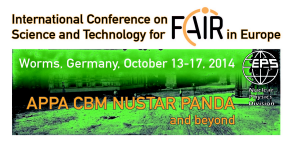Speaker
Ms
Zahra Haddadi
(KVI-CART)
Description
Charmonium spectroscopy is an ideal tool to systematically study the strong interaction between the fundamental building blocks of matter, quarks and gluons. From a theoretical and experimental point of view, charmonium is considered as one of the most controllable two-quark systems. Hence, precision measurements of the properties of charmonia allow a thorough study of the non-perturbative features of the strong interaction, such as confinement and the dynamic generation of the mass of hadrons. Although all predicted charmonium states below the open-charm-production threshold have been observed experimentally, our knowledge is surprisingly sparse on the spin singlet S-wave states, including the charmonium ground state, the ηc. Even for the basic properties of this state, the mass and width, large discrepancies between various experiments have been observed. Intriguingly, BESIII recently observed an interference between various hadronic decays of the ηc and a non-resonant background in radiative magnetic dipole transitions. Although, such an interference partially explains the discrepancies observed earlier, its origin remains a puzzle. In this work, we study the ηc line shape using world’s largest data sample of Ψ(3686) events which is collected in e+ e- annihilations with the BESIII detector at the BEPCII storage ring in Beijing, China, with the aim to shed light on this puzzle.
Primary author
Ms
Zahra Haddadi
(KVI-CART)
Co-authors
Prof.
Herbert Loehner
(KVI-CART)
Dr
Johan Messchendorp
(KVI-CART)
Mr
Marcel Temens
(KVI-CART)
Dr
Myroslav Kavatsyuk
(KVI-CART)
Prof.
Nasser kalantar-nayestanaki
(KVI-CART)
Ms
Olga Bondarenko
(KVI-KART)

